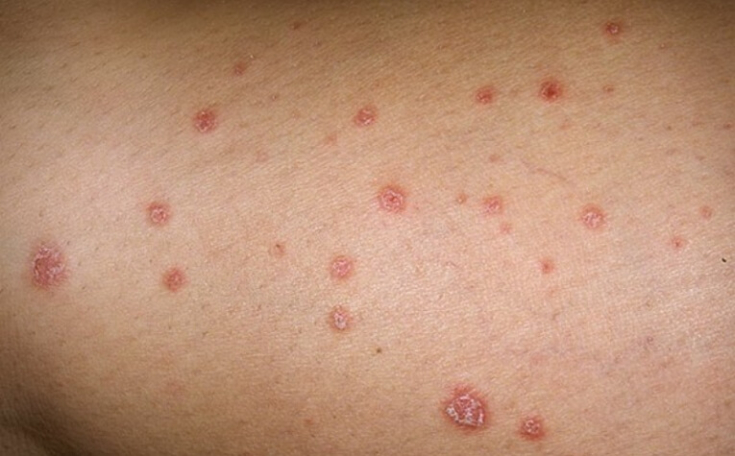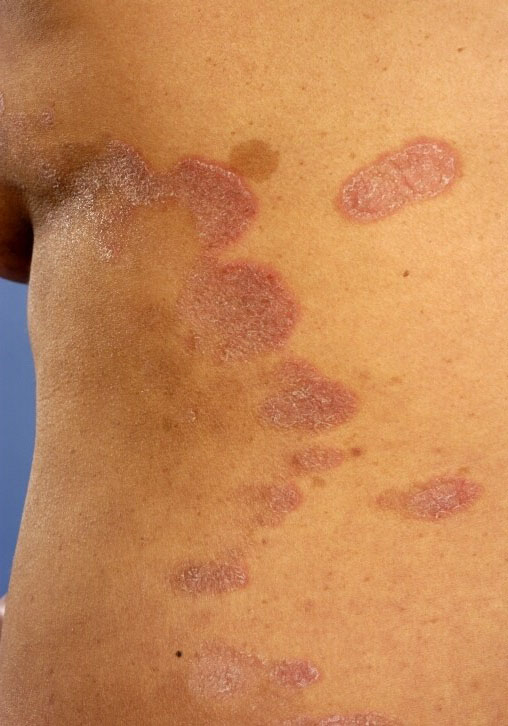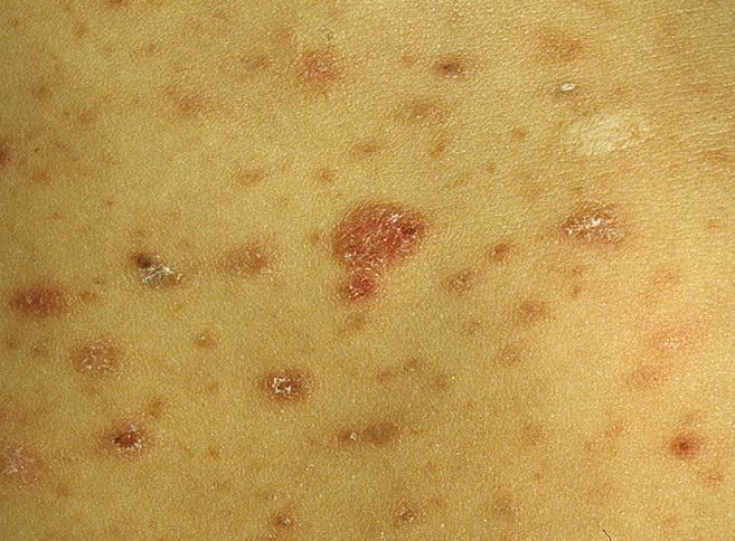In the early 1900s. the French specialist in the field of dermatology L. Brock combined a number of dermatoses with insufficiently studied etiology and pathogenesis of development at that time under the term parapsoriasis. Despite further study of diseases and the exclusion of a common component, they continue to be considered within the same group.
Parapsoriasis occurs in the following forms: teardrop, plaque and lichenoid, they are diagnosed according to the clinical picture and histological characteristics. The question of the possibility of transformation of such dermatoses into malignant lymphoma remains open. A number of authors categorically reject such a possibility, however, the result of recent studies in the field of dermatology has not ruled out the risk of complications.
At estet-portal.com we will understand in detail,
Guttate parapsoriasis: features of clinical manifestations
Guttate parapsoriasis
manifests at 20 – 30 years old, mainly among the representatives of the stronger sex. The likely causative agent of dermatosis is a bacterial infection. Patients with guttate parapsoriasis have a history of tonsillitis, chronic tonsillitis, influenza, sinusitis. In the pathogenesis of the disease, a key role belongs to changes in vascular trophism by the type of infectious vasculitis. According to the course, the pathology is classified into acute, subacute and chronic forms.
The symptoms of guttate parapsoriasis usually appear during the off-season.
Treatment of guttate parapsoriasis begins with a course of antibiotics of broad therapeutic activity to eliminate the source of infection. Shown vitamin therapy, physiotherapy. The acute form of the disease requires the appointment of corticosteroids for a short period with a gradual decrease in dosage.
 Everything a dermatologist needs to know about topical glucocorticoids
Everything a dermatologist needs to know about topical glucocorticoids
Clinic and signs of plaque parapsoriasis
The etiology of plaque parapsoriasis is not well understood. Data from clinical studies have shown a connection between the symptoms of parapsoriasis and chronic diseases of the internal organs, the digestive tract, and the genitourinary system.
 It is noteworthy that the severity of manifestations of parapsoriasis subsides as the underlying pathology is treated, which made it possible to conclude that plaque parapsoriasis is an intoxicating nature.
It is noteworthy that the severity of manifestations of parapsoriasis subsides as the underlying pathology is treated, which made it possible to conclude that plaque parapsoriasis is an intoxicating nature.
Parapsoriasis occurs after 30 years mainly in men. First, several spots are symmetrically formed on the shoulders, forearms, thighs or legs, on the sides of the body, abdomen. Their sizes and shapes are different: from rounded formations of 2 – 3 cm, up to strip-shaped up to 12 cm long.
The color ranges from yellow-pink to yellow-brown or red during the period of exacerbation.
In plaque parapsoriasis, the rash remains unchanged from several weeks to 2 – 3 years, and then gradually increases with an increase in the brightness of the color, new spots appear, moderate itching appears. When the rash disappears, no traces remain on the skin.
In addition to eliminating the underlying disease, the treatment of parapsoriasis is reduced to the appointment of B vitamins, ascorbic and nicotinic acid.
Read the most interesting articles on
Instagram!
Lichenoid parapsoriasis: diagnosis and treatment
In areas subject to friction with clothing elements, the color of papules with parapsoriasis is brighter.
The disease progresses slowly, exacerbations occur in the spring, and during remission, the skin in the foci of rashes is uneven, with dark brown spots.
Treatment of parapsoriasis is symptomatic, vitamins are prescribed for long courses, UVI, spa therapy.
You may also be interested in:
How to recognize microbial eczema.







